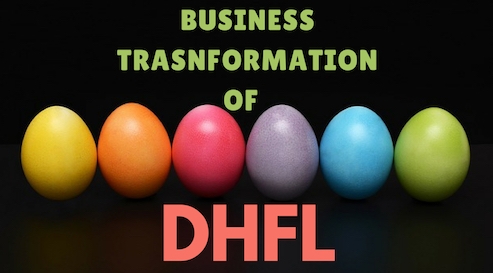Rajendra Mehta, chief people officer, who joined DHFL towards the end of 2016, implemented several development initiatives to champion the people’s cause and enhance employee productivity.
Dewan Housing Financial Corporation’s (DHFL) assets under management (AUM) have witnessed a growth of 33 per cent year-on-year touching Rs 111,086 crore. Employee productivity also moved up the curve through the financial year, and had a positive impact on business growth continuity. The Company’s frontline attrition reduced 40 per cent. Most of these results are an outcome of focused drive on performance coupled with HR initiatives
Rajendra Mehta, chief people officer, who joined DHFL towards the end of 2016, decided to implement employee development initiatives focused on improving employee productivity, which ultimately resulted in business growth.
One of the key elements of the transformation for the company was to integrate employees of DHFL (Dewan Housing Finance Corporation Ltd) and DSSL (DHFL Sales and Services Private Ltd) into one seamless organisation.
Mehta witnessed that DSSL employees felt that they were not considered a part of the central organisation. He realised how this impacted employee performance and was leading to attrition, and hence, decided to do something about it.
The Company took conscious efforts to ensure that employees of DSSL experienced a sense of belonging to the central organisation. Besides involving them in all celebrations, employees were given the chance to migrate and grow on the basis of their performance.

The key levers of employee performance across the organisation are high growth, high profitability and high-impact managers. When employees deliver exceptional performance they also help to clone high performance in the organisation, with other employees aspiring for the same.
Under its ‘Gati’ initiative, employees can easily move from one entity to another, within the Company. Many gained from these internal shifts and joined at higher positions. Such employees, having been culturally imbibed into the organisation and aware of ways to navigate the system, were able deliver superlative performance compared to lateral hires. Their understanding of the business and customers was an added advantage.
Another significant initiative was to structurally converge roles under leadership to drive business effectiveness. This enabled the organisation to align people and have a focussed approach in driving business through a stronger convergence of sub-functions.
It undertook proactive measures to ring-fence critical talent and keep attrition values well within the industry range. The Company started offering discounted executive courses for employees, in combination with in-campus and online options. In case the employees decide to leave the organisation in the middle of the course, they were expected to pay the remaining fee. The course structure was aimed to empower employees with skills that will help in career progression.
The presence of a majority of non-graduates, who are also exceptional performers, makes the programmes truly relevant to the individual growth of employees within the organisation.
Another initiative was the RACE (Recognise and Celebrate Excellence) programme, a quarterly employee recognition programme to honour performers and motivate them to build a united, high-energy and target-oriented culture..
In order to build a highly productive organisation, DHFL tried to push behaviour oriented towards high performance and achievement.
“The key levers of employee performance across the organisation are high growth, high profitability and high-impact managers. When employees deliver exceptional performance they also help to clone high performance in the organisation, with other employees aspiring for the same,” says Mehta.
The Company further identified two unique levers for each role. For instance, in a sales role, the employee was judged on high growth (turnaround time of loan) and mortality of loans (assets being underwritten are good assets).
“It’s not just about announcing plans, but getting to the depth of these initiatives and strengthening initiatives to institutionalise them so that employees can benefit,” adds Mehta.
Last year, DHFL recognised 1,500 employees across the organisation under the RACE programme, and the last quarter culminated into the annual business meet, where employees were taken overseas to reward them for performance. The growth in manpower is in line with the company’s strategy of business and operation growth. DHFL’s total workforce is now over 10,000.
Mehta also introduced the high-potential programme, aimed to objectively assess the talent in employees and then invest in them through their development journey. He also implemented the blended-learning approach programmes to engage people in high-impact projects.
The Company thrusts on the need for high and consistent performance, through these various programmes. Organisations can deliver on employee aspirations on three levels—learning, earning and growth. The initiatives have been aimed at driving the need for performance, happiness of employees and talent retention. Today, the business development executive productivity has almost doubled as compared to FY16-17, informs Mehta.
All through the process, the Company took care to track the initiatives to understand if they were received positively by the employees. It championed the people cause to establish trust with the employees.
“As the industry is witnessing growth, there is a need to attract talent and retain the same, as this will determine how long the organisation rides the growth wave,” sums up Mehta.



